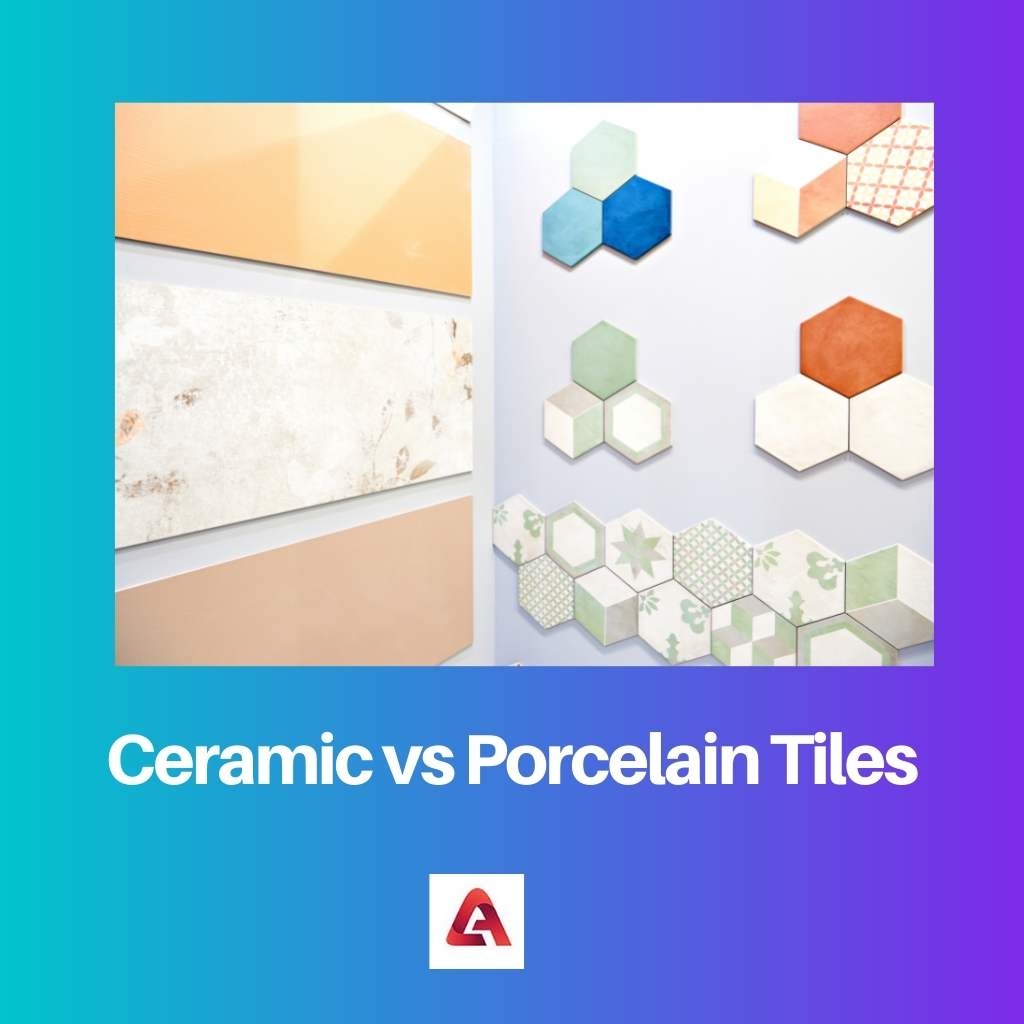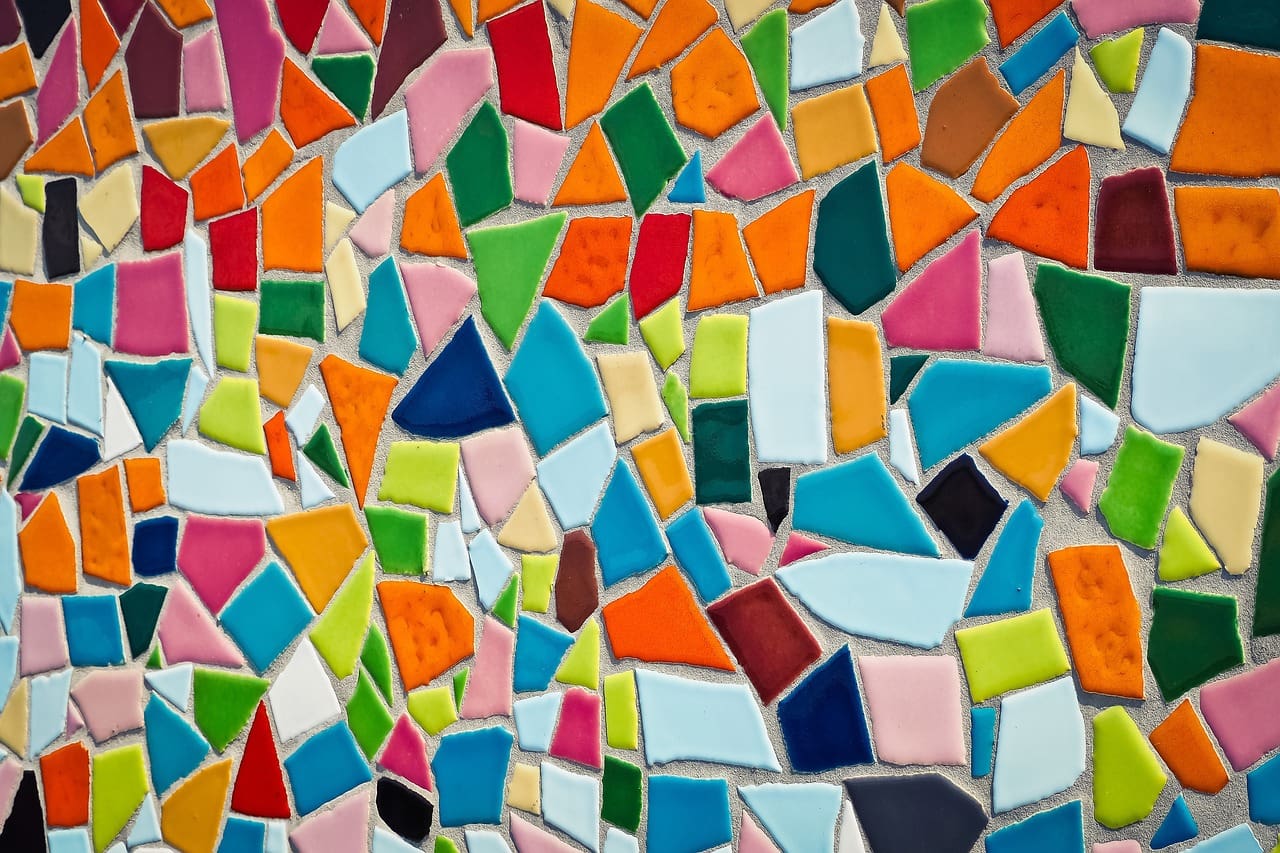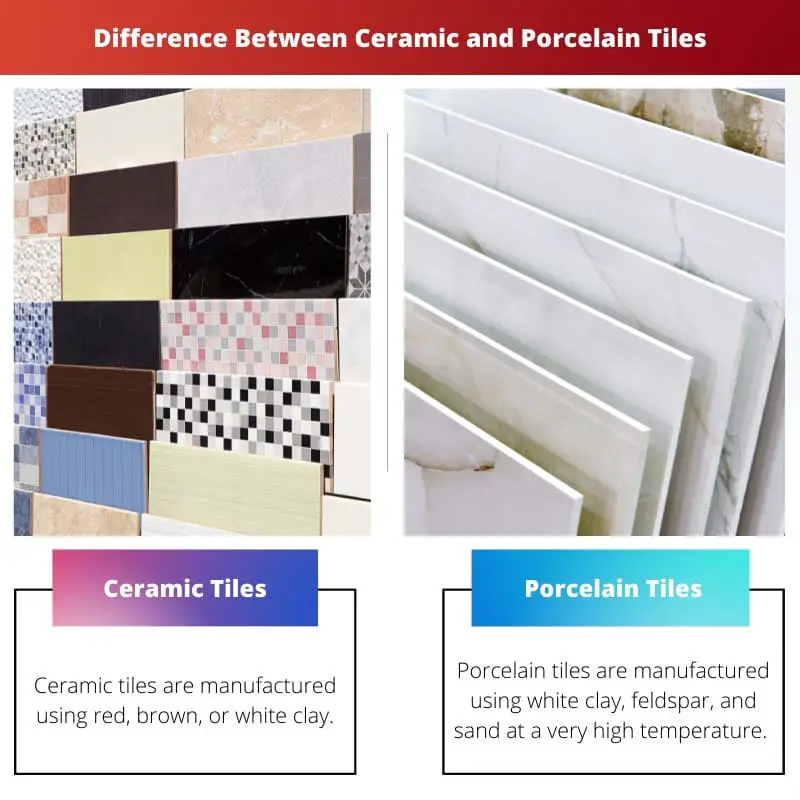While designing a home or a commercial place, durability is also important apart from making it visually attractive. Ceramic and porcelain tiles are very common choices when it comes to decorating floors and walls.
Well, while the former is appropriate for interior use, the latter is fit for both.
Key Takeaways
- Porcelain tiles are denser, more durable, and less porous than ceramic tiles, making them suitable for indoor and outdoor use.
- Ceramic tiles are easier to cut and install, while porcelain tiles require special tools and expertise for proper installation.
- Ceramic tiles are less expensive than porcelain tiles, making them a cost-effective option for homeowners.
Ceramic vs Porcelain Tiles
Ceramic tiles are made from clay and other natural materials. Porcelain tiles are made from a mixture of fine-grain clay and feldspar that is fired at higher temperatures, having a lower water absorption rate making it denser, harder, and more resistant to moisture and wear than ceramic tiles.

Ceramic tiles are used for interior designing and on low foot traffic areas. They cannot withstand harsh weather especially low-temperature which otherwise results in cracking.
Ceramic tiles are a better choice for interior decorating because they come in a variety of textured surfaces that add more visual depth.
Porcelain tiles are very hard and water-resistant. They are extensively used for commercial purposes like in hotels and shopping malls.
They also perform well in high foot traffic areas and, at the same time, have a very smooth texture. Porcelain tiles are hard to cut and shape.
Comparison Table
| Parameters of Comparison | Ceramic Tiles | Porcelain Tiles |
|---|---|---|
| Manufacturing process | Ceramic tiles are manufactured using red, brown, or white clay. | Porcelain tiles are manufactured using white clay, feldspar, and sand at a very high temperature. |
| Appearance | Ceramic tiles have a glazed surface coloring but the chips underneath may have a different color. | Porcelain tiles maintain uniform color and texture throughout their thickness. |
| Finish | The ceramic tiles on the unglazed surface feels coarse. | The finish of the porcelain tiles is comparatively much smoother. |
| Durability | Ceramic tiles are not very durable and more prone to cracking during cold weather. | Porcelain tiles absorb less water and hence they are more durable. |
| Weight | Ceramic tiles are comparatively lightweight because they are less dense. | Porcelain tiles are very hard and much denser than ceramic tiles. |
| Applications | Appropriate for use in interior walls and low foot traffic areas (interior). | Appropriate for use in floors, walls exposed to high moisture levels, and high foot traffic areas. |
| Cutting | Ceramic tiles can be easily cut and shaped. | Cutting porcelain tiles is very hard and requires special tools. |
| Interior/Exterior | Ceramic tiles are suitable for interior designing. | Porcelain tiles are suitable for both interior and exterior uses. |
What is Ceramic Tile?
Ceramic tiles are manufactured using any of the three different types of clay (red, brown, or white). The clay is first fired at a high temperature to reduce the water content which is followed by the glaze and patterns.
The spaces between the tiles (called grout) are filled with a mixture of water, sand, and cement-like material.
Ceramic tiles have a glaze on the surface, and underneath, it has a different color. They are not uniformly smooth. Ceramic tiles are used for interior purposes in low-foot-traffic areas.
They are lightweight and have less density, which is inappropriate for high foot traffic areas.
There are three types of ceramic tiles. The glazed ceramic tiles have a protective finish that varies from matte (natural look) to glossy (chic look). The other two types are wall tiles and floor tiles. Ceramic tiles are best for bathrooms and kitchens.

What is Porcelain Tile?
Porcelain tiles are manufactured in searing hot temperatures (somewhere between 2,300 to 2,400 Fahrenheit). Since it is made at extremely high temperatures, porcelain tile is much stronger as compared to ceramic tiles.
They also absorb less water and have proven to be appropriate for exterior design. They barely have any pores and thus can be installed in high-moisture areas.
Mosaic tile is a type of porcelain tile where the patterns are laid out on a mesh backing. These types of tiles are also used in kitchens or the shower.
There are several classes and categories of porcelain tiles, among which Class 5 is the toughest and most durable one. And Grade 1 porcelain tiles mark the thickest in the stack.
Though porcelain is commonly found in white color, there are many bold color porcelain tiles available in the market nowadays. Unlike ceramic tiles, porcelain tiles maintain uniformity of color throughout their thickness.

Main Differences Between Ceramic and Porcelain Tiles
- Ceramic tiles are manufactured using red, brown, or white clay, whereas porcelain tiles are manufactured using white clay, feldspar, and sand at a very high temperature.
- Ceramic tiles have a glazed surface coloring but the chips underneath may have a different color whereas porcelain tiles have uniform color throughout their thickness.
- The ceramic tiles on the unglazed surface feel coarse, whereas porcelain tiles have a smooth finish.
- Ceramic tiles are not very durable and more prone to cracking during cold weather, whereas porcelain tiles absorb less water and are hence more durable.
- Ceramic tiles are comparatively lightweight because they are less dense than porcelain tiles.
- Ceramic tiles are appropriate for use in interior walls and low foot traffic areas (interior), whereas porcelain tiles are used in floors, walls exposed to high moisture levels, and high foot traffic areas.
- Ceramic tiles can be easily cut and shaped, but porcelain tiles require special tools for cutting and shaping and can be performed by professionals only.

This article would be more helpful if it included more information on the cost comparison between ceramic and porcelain tiles. Otherwise, this is a great comparison.
The article offers a comprehensive comparison between ceramic and porcelain tiles. It is very informative and helpful.
The difference between ceramic and porcelain tiles is clearly explained. This article is easy to understand and very useful.
I would love to see some recommendations from design experts on which tiles would be best to use. The article is great but this would enhance it further.
How come there are no references to actual stores that sell ceramic and porcelain tiles? I think the writer could have included some information about where to buy these tiles.